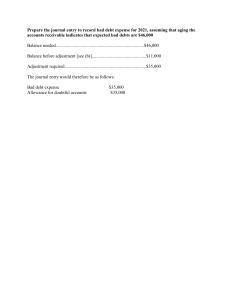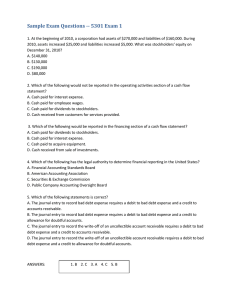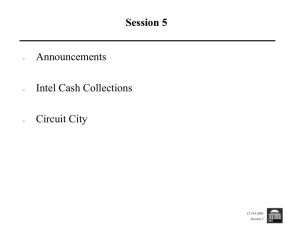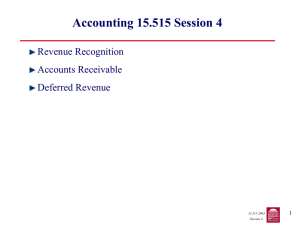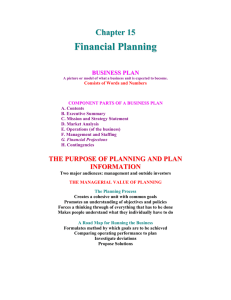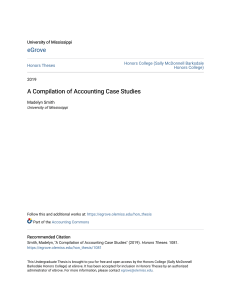Problem Set #3 15.501/516: Financial and Managerial Accounting Solutions
advertisement
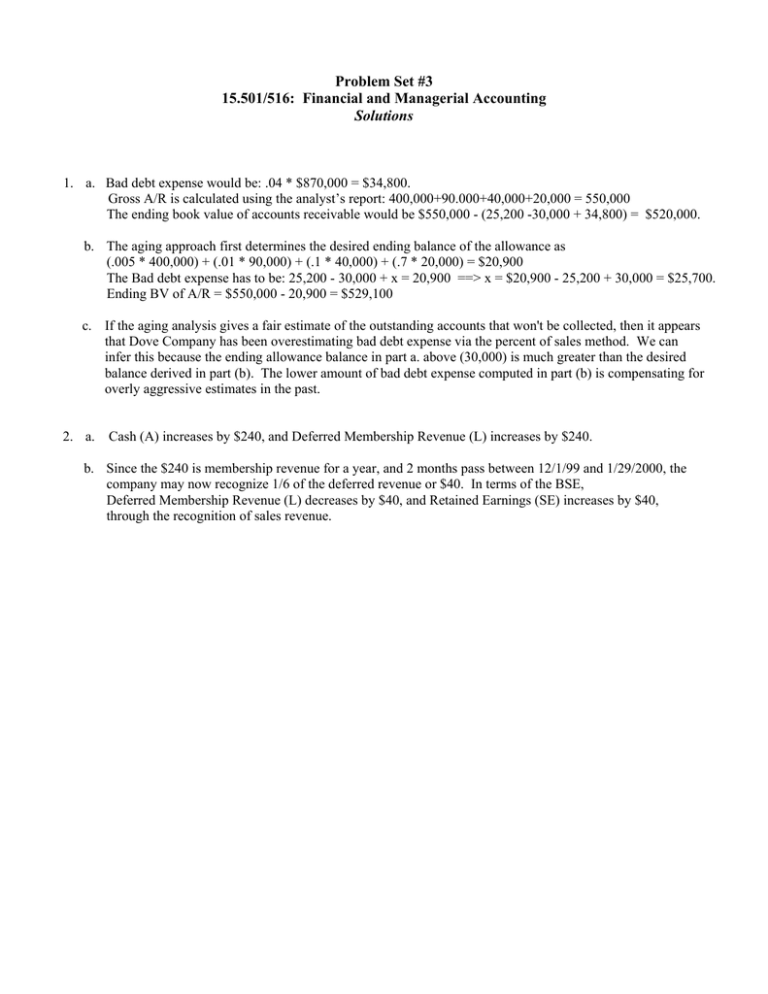
Problem Set #3 15.501/516: Financial and Managerial Accounting Solutions 1. a. Bad debt expense would be: .04 * $870,000 = $34,800. Gross A/R is calculated using the analyst’s report: 400,000+90.000+40,000+20,000 = 550,000 The ending book value of accounts receivable would be $550,000 - (25,200 -30,000 + 34,800) = $520,000. b. The aging approach first determines the desired ending balance of the allowance as (.005 * 400,000) + (.01 * 90,000) + (.1 * 40,000) + (.7 * 20,000) = $20,900 The Bad debt expense has to be: 25,200 - 30,000 + x = 20,900 ==> x = $20,900 - 25,200 + 30,000 = $25,700. Ending BV of A/R = $550,000 - 20,900 = $529,100 c. If the aging analysis gives a fair estimate of the outstanding accounts that won't be collected, then it appears that Dove Company has been overestimating bad debt expense via the percent of sales method. We can infer this because the ending allowance balance in part a. above (30,000) is much greater than the desired balance derived in part (b). The lower amount of bad debt expense computed in part (b) is compensating for overly aggressive estimates in the past. 2. a. Cash (A) increases by $240, and Deferred Membership Revenue (L) increases by $240. b. Since the $240 is membership revenue for a year, and 2 months pass between 12/1/99 and 1/29/2000, the company may now recognize 1/6 of the deferred revenue or $40. In terms of the BSE, Deferred Membership Revenue (L) decreases by $40, and Retained Earnings (SE) increases by $40, through the recognition of sales revenue.
